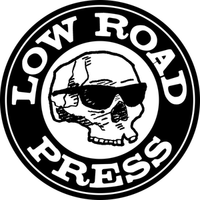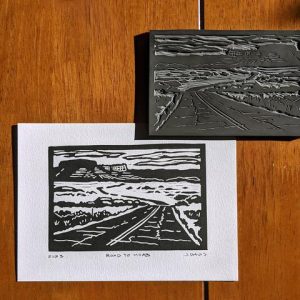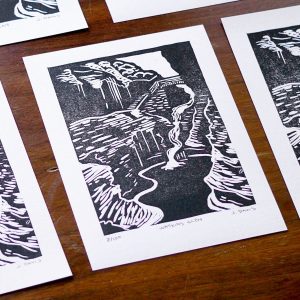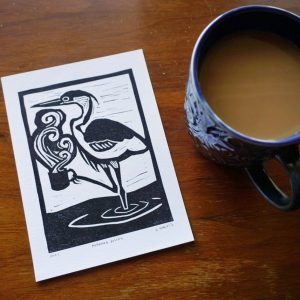Are you interested in learning what tools and supplies to use for making linocut prints? You came to the right place!
Read on for some information about what I use to prepare, carve, and print linoleum block prints.
Carving tools
For most prints I use a mix of Mikisyo Power Grip Japanese steel carving tools and Speedball interchangeable lino cutting heads with a vintage wooden speedball lino cutting handle.
To keep my carving tools sharp, I use a Flexcut Slipstrop before, during, and after carving.
For beginners, I'd recommend buying the Speedball Deluxe Block Printing set. This is an enhanced version of a beginner kit I purchased originally and includes a lino cutter set, rubber brayer, two different types of lino blocks, a good mix of water-based inks, and a bench hook for inking / carving, all for around $50. I bought a smaller set to start with and then ended up buying most of the other bits separately as I went, but this is a better deal.
Brayers
I currently use two Speedball brayers that work well for doing multiple colors on a single block, or for larger blocks where you'd like to try a fade. One brayer came with the kit I mentioned above and has a pop-in roller, this can also be purchased separately: Speedball Pop-in Soft Rubber Brayer.
I later added another "upgraded" Speedball Deluxe Soft Rubber 4" brayer that has a sturdier metal frame and is easier to clean while still assembled.
Ink
I use Speedball block inks. I started with the Speedball Water Based Relief Inks. These come with the beginner set mentioned above, or can be purchased separately in a wide variety of colors, sizes, and assorted sets. These inks are good to learn with, but in a low-humidity environment i found that they dried quickly on the inking plate and on the block, so I would have to occasionally clean the block and plate off while in the middle of printing. The water-based inks sometimes give more texture and a more distressed appearance.
Later, I purchased a set of the Speedball Oil-Based Water-Miscible Professional Relief Inks. These are slower to dry, and give a smoother appearance typical of oil inks, but are still fairly easy to clean up with soap and water.
Paper cutter
I usually buy larger books of paper and cut it down to size before printing.
I've bought a lot of art in the past that had to be trimmed after the fact or required a custom, odd sized frame. I'm fond of the 5"x7" paper format for printing because it can be easily framed with inexpensive standard sized frames.
I use a Swingline Guillotine Paper Cutter to crop my paper. It can handle paper up to 12"x12", and has clever markings with various measurements to simplify the process. I prefer the guillotine style over the rotary trimmers, the guillotine seems to work smoother for me and gives a nice satisfying sound when you swing it down. Off with their excess paper!
Paper
I typically use Strathmore or Canson acid-free multi-media paper, but this may vary on some prints, as noted in the descriptions.
Recently added to my shop
-

Road to Moab
$11.95 Add to cart3 in stock
-

Date Night spirit board print
$10.95 – $14.95 Select options2 in stock
-

Watkins Glen State Park
$13.95 Add to cart4 in stock
-

Morning Shift
$13.95 Add to cart2 in stock












